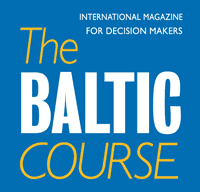EU – Baltic States, Good for Business, Innovations, Legislation, Markets and Companies, Technology
International Internet Magazine. Baltic States news & analytics
Saturday, 21.06.2025, 10:58
Innovations: challenges for all age-groups
 Print version
Print version |
|---|
There is another bigger change in the EU too, i.e. more significant in the long term: the European continent is getting older. One of the European organization – the AGE- works for people in Europe over 50; it means that AGE represents presently about 150 million people. By 2060, though, the figures could reach about half of the EU population. And over that same period, the number of over 65s will almost double while government spending on related areas could increase by 20%.
Inherent problems
There are a number of ways to look at the issue of innovations “for all”; on one side, it can be seen as a triumph in health policy: advancing medical science and enlightened public policy have delivered wonderful prospects for citizens in Europe –longer and healthier lives.
On another side, it provided a fantastic market opportunity: after all, the potential “grey market” of older people is already worth around €3 trillion – and growing fast.
In the present economic situation the issue could provide additional opportunities to create growth and jobs, as the EU-2020 strategy envisaged.
Unfortunately, in some member states politicians approach “the grey issue” as a burden, i.e. as increasing challenges and a rising cost in the national accounts, as well as an “awkward trend demanding an arduous response” (too many people do see the issue it that way).
Reference: “Innovation isn't just for the young”; Speech/13/430 at the AGE Platform Europe General Assembly /Brussels, 17 May 2013; Neelie Kroes, Vice-President of the European Commission responsible for the Digital Agenda.
To deal with the issue, numerous changes shall be taken; most well-informed people and even politicians have got the right message. However, that does not really changing member states’ politics and social philosophy. Politicians, generally, are looking at the problem in the short terms.
Most decision-makers are focused on the immediate economic crisis; ignoring the fact that Europe in several decades will look totally different. The EU states are facing changes that call for more than a few legal rules concerning pension age; the region needs a re-thinking of an urgent society issue. The vision shall be long standing: to see how the country and the EU will look like in a few decades' time and what needs to be done. Important to see what will be the impact of “gray issue” on people, on public spending, on planning, as these impacts will be substantial.
Innovations as a solution
In order to stimulate and support the changes, the EU and the
member states need innovative approach. One of the answers to the issue could
be found through the digital technology.
When people think of ICT innovation, they too often think of young people. Of teenagers constantly texting, sites targeted at twenty-something, start-up millionaires barely out of high school.
But new technology isn't just about the younger generation. And innovation isn't just for the young: it's for everyone. It can serve the most vulnerable in the European society. It can help older people lead happier, healthier lives. And it can help in the EU’s shift to an age-friendly society.
Medical and health institutions: active role
For example, in the EU healthcare practice, the member states’ medical and health institutions were built at a different age when the need was to deal with acute conditions, short-term problems which hospitals could resolve.
An older population faces a different challenge: conditions are often chronic, degenerative, and multiple. That calls for a different kind of treatment. One that does not rob people of dignity and independence, but lets them stay active and healthy as they age. And ICT provides many ideas for how to do that; from simple mobile apps that empower people to take control, to entire environments for assisted living.
The EU is investing in those ideas; the EU scientific programs (e.g. FP7 and Horizon 2020 programs) will continue to look at fundamental research: into the effect of ageing on body, mind and community, as well as into the technologies, services and applications that can tackle these challenges. The issue is, how the governments can help older people live actively and independently for longer time?
Several solutions are already at hand: from chips in the shoes that help people keep their balance to robot companions that assist people at home. The EU and the member states are researching the innovations that could help older people.
But smart gadgets aren't enough: the EU needs to use them actively and roll those ideas out into the real world, i.e. seize new opportunities, innovate in services and start making a difference to people's lives.
When people do roll-out those ideas, they see the benefits. Trials in regions across Europe have shown that innovations like tele-health (or e-health) can improve survival and recovery as well as cut inconvenient, costly hospital visits.
Innovation Partnership
In fact, the ideas and experiences are already implemented in some member states; it's time to start swapping them and using them widely. That is the philosophy of the EU Innovation Partnership on Active and Health Ageing, which is both a platform and a forum for many actors to come together. Already at present, there are more than 3,000 parties contributing to 261 initiatives, focussed on 6 concrete actions, from independent living to integrated care.
These contributing initiatives and partnership aren't working for money: they are there to gather evidence, share and learn from each other. It's a great platform to build the evidence base, energise those who already get the message and educate those who don't. And those hundreds of initiatives are already helping improve the lives of millions of Europeans.
The AGE Platform is a very active participant in that scheme: with 45 partners reaching over 360 administrations. However, healthcare is just one part of an age-friendly EU. It's also about having homes more suited to older people or building smarter cities, where it's easier to get around, and which are more responsive to people's needs. In fact, “Smart Cities” is the subject of the EU’s new European Innovation Partnership.
The EU also needs fast broadband networks that make all those things possible; therefore, in fact, healthcare is just one part of the “general puzzle”: besides the medical treatment, prevention, social care, and better living are also needed. All these ingredients must be integrated, if the member states want to help older people live independent and fulfilling lives for longer.
These changes to the European society are in the distant future; but not too far in the future for most politicians to focus on, or care about. Because sooner or later the states are going to feel the effects of that change: the sooner the states start planning for that future, the better it would be for the citizens.
No doubt, all that calls for a change in attitude as ageing is not a problem but a source of innovation and growth. It's not just an expanding cost to be cut, but a growing market opportunity to be served. The EU member states shall get together to share and see how to do things differently; they have to transform existing practices to fit into changing needs.
Reference: http://europa.eu/rapid/press-release_SPEECH-13-430_en.htm?locale=en








 «The Baltic Course» Is Sold and Stays in Business!
«The Baltic Course» Is Sold and Stays in Business!

